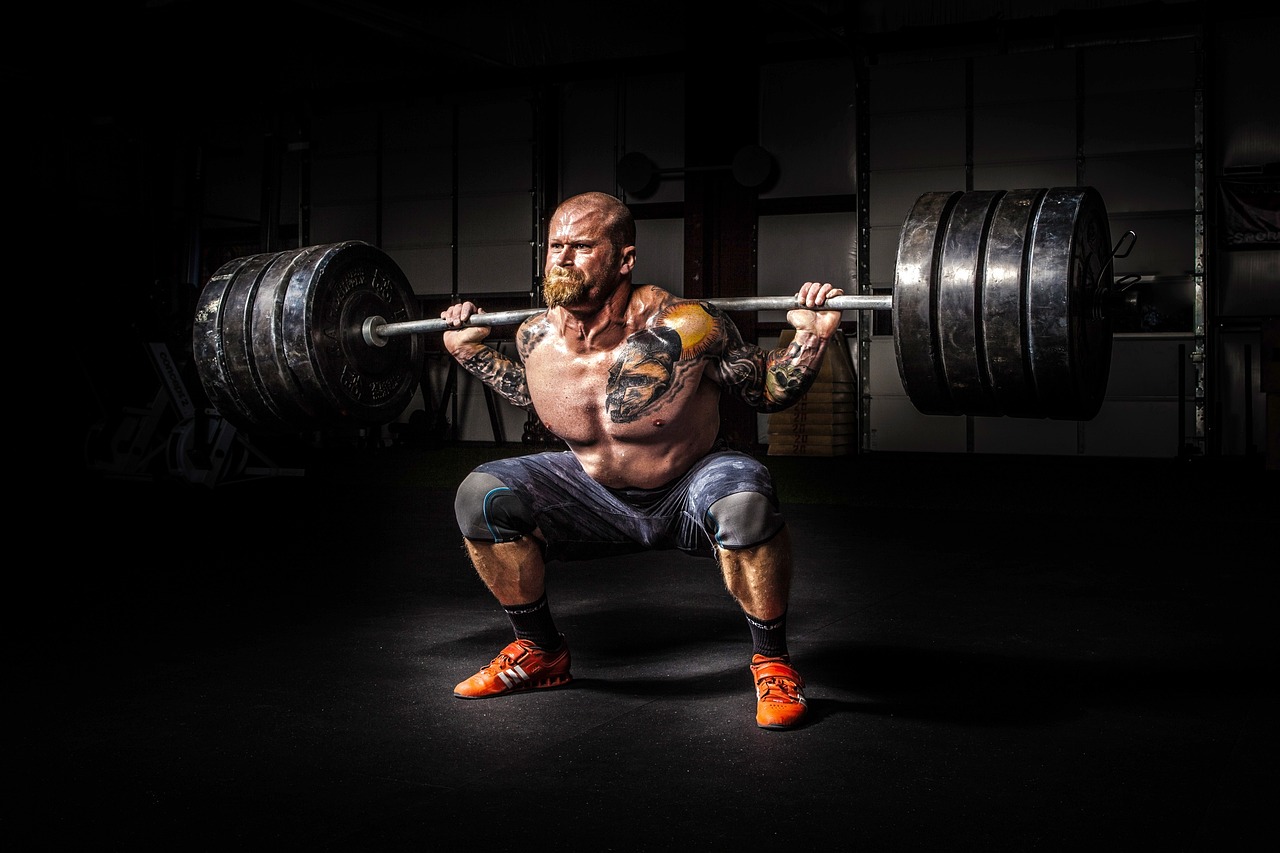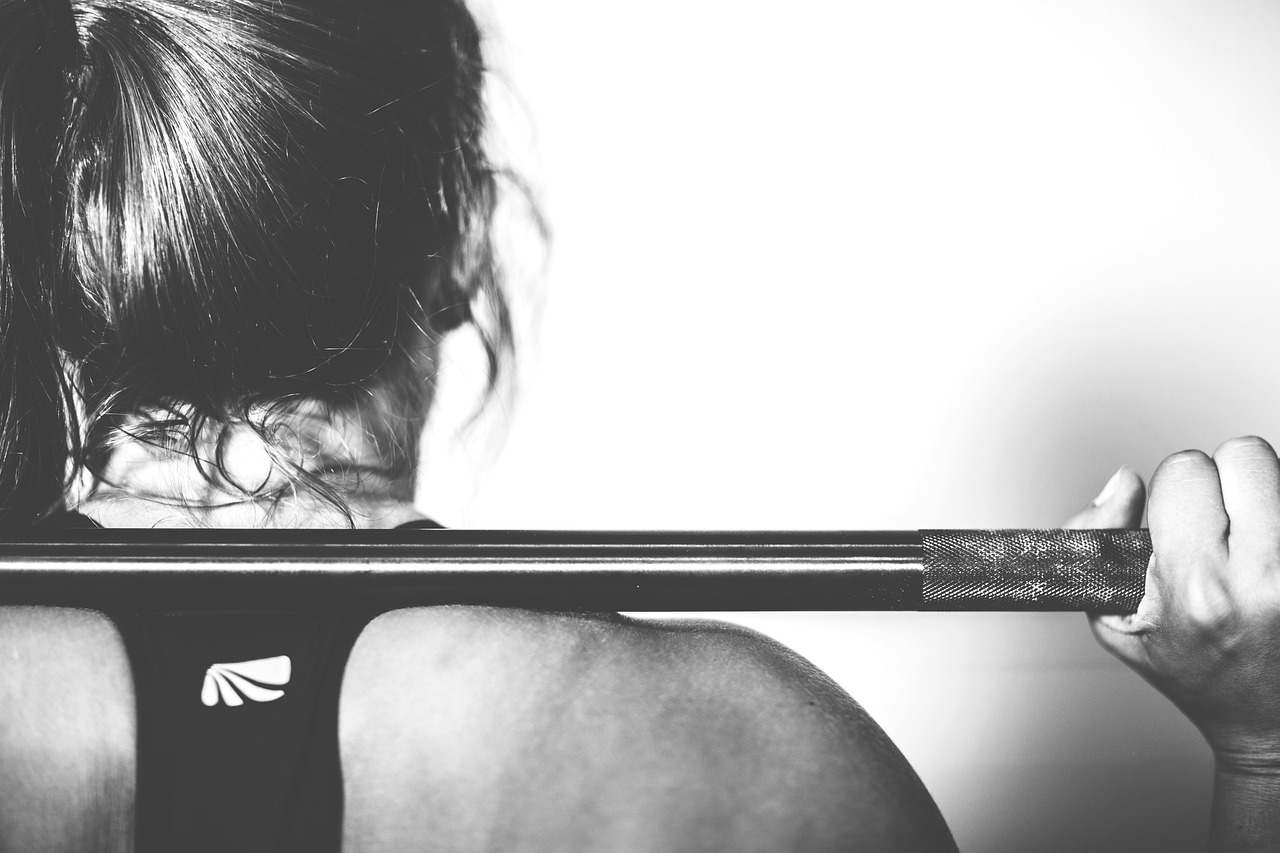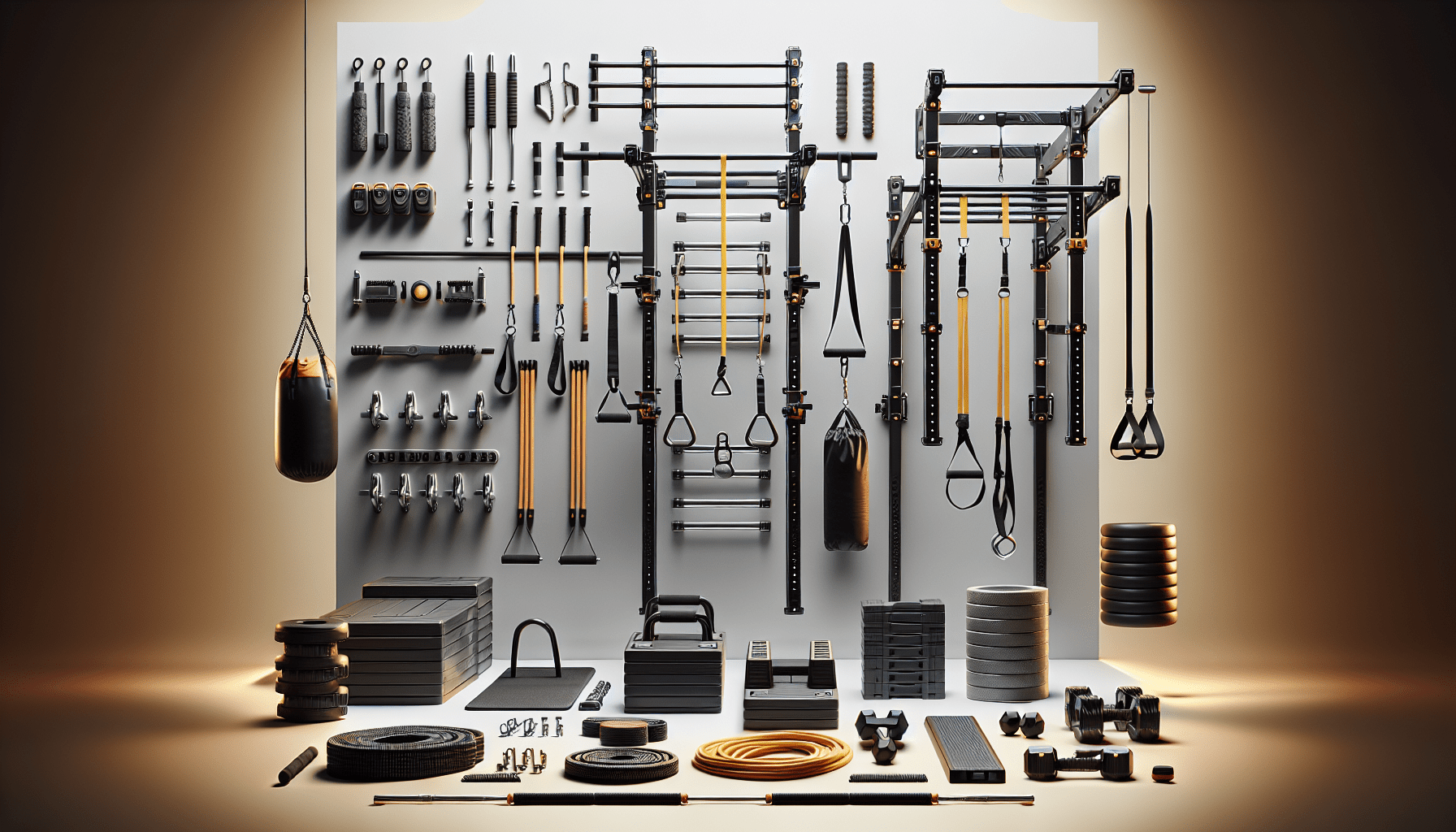Looking to stay fit and active without leaving the comfort of your own home? Look no further! In this article, we will explore the world of home calisthenics workouts. Whether you’re a beginner or a seasoned fitness enthusiast, these workouts will help you build strength, improve flexibility, and tone your muscles, all from the convenience of your living room. Say goodbye to expensive gym memberships and hello to a healthier, happier you with these effective and enjoyable exercises. So grab a mat, put on your favorite workout playlist, and get ready to feel the burn with home calisthenics workouts!
Benefits of Home Calisthenics Workouts
Improve strength and muscle tone
One of the biggest benefits of home calisthenics workouts is the improvement in strength and muscle tone. Performing exercises like push-ups, squats, and lunges activates multiple muscle groups, helping you build strength and sculpt your muscles. As you progress with your workouts and gradually increase the difficulty level of the exercises, you’ll continue to see improvements in your overall strength and muscle definition.
Increase flexibility and mobility
Calisthenics exercises also contribute to improved flexibility and mobility. Movements like dynamic stretches and lunges help to increase the range of motion in your joints and muscles, making them more flexible and less prone to injuries. Improved flexibility also translates to better performance in other physical activities and daily tasks.
Burn calories and lose weight
If you’re looking to shed some pounds or maintain a healthy weight, home calisthenics workouts can be a great way to burn calories and lose weight. Exercises such as mountain climbers and high knees elevate your heart rate, helping you burn calories and improve cardiovascular health. Additionally, the intensity of calisthenics exercises can lead to an afterburn effect, where your body continues to burn calories even after you’ve finished your workout.
Enhance cardiovascular fitness
In addition to burning calories, home calisthenics workouts are an effective way to enhance your cardiovascular fitness. Activities like jumping jacks and dynamic stretches get your heart rate up, increasing blood flow and oxygen delivery to your muscles. Regularly incorporating these exercises into your routine can help improve your endurance and cardiovascular health over time.
Convenient and cost-effective
One of the key advantages of home calisthenics workouts is the convenience and cost-effectiveness they offer. You don’t need any fancy equipment or a gym membership to get started with calisthenics. Bodyweight exercises can be done anywhere, anytime, and all you need is a small space to move around. Additionally, compared to purchasing expensive exercise equipment or paying for gym fees, home calisthenics workouts are a budget-friendly option.
Equipment-Free Exercises
Push-ups
Push-ups are a classic calisthenics exercise that targets the muscles in your chest, shoulders, and triceps. Place your hands shoulder-width apart on the floor, extend your legs straight behind you, and lower your chest towards the ground while keeping your body in a straight line. Push back up to the starting position, engaging your chest and arm muscles.
Squats
Squats are a compound exercise that works your lower body, including your quadriceps, hamstrings, and glutes. Stand with your feet hip-width apart, lower your body by bending your knees and pushing your hips back, and then push through your heels to return to a standing position. Squats can be performed with variations such as sumo squats or jump squats to add intensity.
Plank
The plank is an excellent exercise for strengthening your core muscles, including your abs, obliques, and lower back. Start in a push-up position, but instead of supporting your body with your hands, rest on your forearms. Keep your body straight and aligned, engaging your core muscles to hold the position for as long as you can.
Lunges
Lunges target your quadriceps, hamstrings, and glutes while also engaging your core for stability. Stand with one foot in front of the other, take a step forward, and lower your body by bending both knees until your back knee hovers just above the ground. Push through your front heel to return to the starting position and repeat on the other side.
Mountain climbers
Mountain climbers are a dynamic exercise that targets your core, shoulders, and legs while increasing your heart rate. Start in a high plank position, then alternate bringing one knee towards your chest, rapidly switching to the other knee in a running motion. Maintain a strong core and quick pace throughout the exercise.

This image is property of pixabay.com.
Creating a Home Workout Space
Clear enough space
Before starting your home calisthenics workouts, it’s essential to clear enough space to move around comfortably. Arrange furniture or any obstacles to create a designated workout area where you have enough room to perform exercises without hindrance. Make sure there are no sharp or hazardous objects nearby to prevent accidents.
Ensure proper ventilation
Proper ventilation is crucial for a comfortable and effective workout at home. Choose a well-ventilated area or open windows to allow fresh air circulation during your workouts. Good airflow helps reduce the buildup of sweat and maintains a comfortable temperature, preventing overheating or discomfort while exercising.
Use a non-slip surface
To ensure safety during your home calisthenics workouts, it’s advisable to use a non-slip surface. Avoid exercising on slippery or uneven flooring to reduce the risk of slipping and potential injuries. Using a non-slip exercise mat or carpet can provide better traction and stability, especially during exercises that involve jumping or quick movements.
Consider using a mat
While not necessary, using an exercise mat can provide additional comfort during floor exercises and protect your body from hard surfaces. A mat also helps cushion your knees, elbows, and palms, making exercises like push-ups and planks more comfortable. Look for a mat that provides adequate thickness and grip to enhance your overall workout experience.
Warm-Up Exercises
Jumping jacks
Start your home calisthenics workouts with a few sets of jumping jacks to warm up your entire body. Stand with your feet together and arms by your sides, then jump while spreading your feet wider than hip-width apart and simultaneously raising your arms above your head. Jump back to the starting position and repeat for a set duration or number of repetitions.
High knees
High knees are a dynamic warm-up exercise that engages your core, hip flexors, and leg muscles. Stand with your feet hip-width apart, then lift one knee towards your chest as high as you can while hopping on the other leg. Quickly switch legs, alternating high knees in a running motion. Maintain a brisk pace throughout the exercise.
Arm circles
Arm circles are a simple warm-up exercise that helps to mobilize your shoulder joints and increase blood flow to your upper body. Stand with your feet shoulder-width apart and extend your arms straight out to the sides. Make small circles with your arms, gradually increasing the size of the circles. After a few seconds, change the direction of the circles.
Dynamic stretches
Perform a series of dynamic stretches to warm up your muscles and improve their flexibility. Dynamic stretches involve controlled movements through a full range of motion. Examples of dynamic stretches include leg swings, arm swings, and torso twists. Choose stretches that target the major muscle groups you’ll be using during your workout.
March in place
Marching in place is a simple warm-up exercise that activates your leg muscles and increases your heart rate. Stand tall with your feet hip-width apart and march on the spot, lifting your knees as high as you comfortably can. Swing your arms naturally with each step to engage your upper body. Focus on maintaining a brisk pace throughout the exercise.

This image is property of pixabay.com.
Basic Calisthenics Routine
Push-up variations
Once you’ve warmed up, incorporate push-up variations into your calisthenics routine to target your chest, shoulders, and triceps. Standard push-ups involve lowering and raising your body using your arms, but you can modify the exercise based on your fitness level. Examples of push-up variations include wide-grip push-ups, diamond push-ups, and decline push-ups.
Squat variations
Squats can be made more challenging and engaging by incorporating different variations into your routine. Alongside traditional squats, you can try single-leg squats, pistol squats, jump squats, or sumo squats. By adjusting your stance, adding explosive movements, or focusing on one leg at a time, you’ll effectively target various muscles in your lower body.
Plank variations
To keep your core engaged and prevent monotony, include different plank variations in your routine. In addition to the standard forearm plank, you can try high planks, side planks, or plank shoulder taps. These variations challenge different muscle groups within your core and increase the intensity of the exercise.
Lunge variations
Lunges can be modified to target specific muscles and increase difficulty. Incorporate walking lunges, reverse lunges, lateral lunges, or jumping lunges to make your routine more dynamic and engaging. These variations help develop your quads, glutes, and hamstrings while improving your balance and coordination.
Jumping exercises
Jumping exercises such as squat jumps, tuck jumps, or burpees can add an explosive component to your calisthenics routine. These exercises elevate your heart rate, burn calories, and engage multiple muscle groups simultaneously. However, ensure that your body is adequately warmed up and conditioned before attempting these high-impact exercises.
Progressive Calisthenics Exercises
Pull-ups
If you have access to a pull-up bar or sturdy horizontal surface, incorporate pull-ups into your home calisthenics routine. Pull-ups primarily target your back muscles, but they also engage your biceps, shoulders, and core. Start with assisted pull-ups or modified variations, gradually working towards unassisted full-range pull-ups as your strength improves.
Dips
Dips are an effective exercise for targeting your triceps, shoulders, and chest muscles. Find parallel bars or use sturdy furniture like chairs placed shoulder-width apart, then lower your body by bending your arms and keeping your elbows tucked in. Push through your arms to return to the starting position. As with any exercise, start with modified versions if needed.
Handstand push-ups
Handstand push-ups are an advanced calisthenics exercise that requires significant upper body strength and balance. Begin by practicing against a wall for stability, gradually working towards freestanding handstand push-ups. This exercise targets your shoulders, triceps, and upper back, while also engaging your core for stability.
Pistol squats
Pistol squats, also known as single-leg squats, are a challenging lower body exercise that targets your quads, glutes, and hamstrings. Stand on one leg with the other leg extended in front of you, then lower your body by bending the supporting leg while keeping the extended leg elevated. Return to the starting position and repeat on the other leg.
Muscle-ups
Muscle-ups are an advanced calisthenics exercise that combines a pull-up and a dip into one fluid movement. This exercise targets your back, biceps, triceps, and shoulders, while also engaging your core and grip strength. Start with assisted or modified variations and gradually work towards achieving a full muscle-up.

This image is property of pixabay.com.
Sample Home Calisthenics Workouts
Full-body workout
- Warm up with jumping jacks and arm circles.
- Perform push-ups, squats, planks, lunges, and mountain climbers in a circuit fashion.
- Complete 3 sets of 10-15 repetitions for each exercise.
- Rest for 30-60 seconds between sets.
- Finish with static stretches to cool down.
Upper body focus
- Warm up with high knees and dynamic stretches.
- Perform push-up variations, dips, handstand push-ups, and pull-ups in a circuit or as individual exercises.
- Aim for 3-4 sets of 8-12 repetitions for each exercise.
- Add weight or modify exercises as you progress.
- End with a cool-down consisting of static stretches for your upper body.
Lower body focus
- Warm up with jumping jacks and leg swings.
- Incorporate squat variations, lunge variations, pistol squats, and calf raises into your routine.
- Complete 3-4 sets of 10-15 repetitions for each exercise.
- Take short breaks of 30-60 seconds between sets.
- Cool down with static stretches targeting your lower body muscles.
Core strengthening
- Warm up with marching in place and torso twists.
- Perform plank variations, Russian twists, leg raises, and bicycle crunches.
- Aim for 3-4 sets of 12-15 repetitions for each exercise.
- Focus on maintaining proper form and engaging your core throughout.
- Cool down with static stretches for your core muscles.
Cardio and endurance
- Warm up with jumping jacks and high knees.
- Incorporate exercises like mountain climbers, burpees, jumping lunges, and squat jumps into a high-intensity interval training (HIIT) format.
- Perform each exercise for a set duration (e.g., 30 seconds) and rest for a shorter duration (e.g., 10 seconds) before moving on to the next exercise.
- Repeat the circuit for multiple rounds, gradually increasing the intensity and duration of the intervals.
- Finish with a cooldown that includes light cardio and stretching exercises.
Tips for Effective Home Calisthenics Workouts
Set realistic goals
When starting your home calisthenics journey, it’s important to set realistic goals that align with your current fitness level and lifestyle. Setting achievable targets will help keep you motivated and prevent feelings of discouragement. As you progress, gradually increase the difficulty and intensity of your workouts to continue challenging yourself and achieving new milestones.
Mix up your routine
To prevent boredom and keep your workouts fresh, mix up your calisthenics routine by incorporating different exercises, variations, and training methods. Trying new exercises not only provides variety but also targets different muscle groups and promotes balanced muscle development. You can also experiment with different workout formats, such as circuit training, HIIT, or AMRAP (as many rounds as possible), to keep your workouts challenging and engaging.
Listen to your body
Always listen to your body during home calisthenics workouts. Pay attention to any discomfort, pain, or unusual sensations. If you experience pain, modify or stop the exercise to avoid injury. Respect your body’s limits and progress at a pace that feels comfortable for you. It’s normal to feel muscle soreness after workouts, but distinguish between muscle soreness and acute pain that could indicate an injury. If in doubt, consult a healthcare professional.
Stay consistent
Consistency is key when it comes to achieving results with home calisthenics workouts. Set a regular schedule and stick to it as much as possible. Even on days when you feel less motivated, aim to do at least a short workout to maintain momentum. Building a habit of consistent exercise will yield long-term benefits and help you stay on track towards your fitness goals.
Track your progress
Keeping track of your progress is a great way to stay motivated and measure the effectiveness of your home calisthenics workouts. Record your exercise routines, the number of sets and repetitions, and any modifications or progressions you make. Additionally, take measurements of your body, such as weight, body measurements, or body fat percentage, to objectively assess your progress over time. Regularly reviewing your achievements can inspire you to push harder and celebrate your improvements.
Preventing Common Injuries
Use proper form
Maintaining proper form is essential for preventing injuries during home calisthenics workouts. Before diving into more challenging exercises or variations, master the correct technique for each movement. Focus on engaging the targeted muscles, maintaining alignment, and avoiding excessive strain on your joints. If you’re unsure about proper form, consider working with a qualified personal trainer or using online resources to learn the correct techniques.
Start with appropriate difficulty level
It’s important to start with exercises and variations that match your current fitness level. Trying to tackle exercises that are too advanced can lead to injuries. Begin with the foundational movements and gradually progress to more challenging exercises as your strength and technique improve. Push yourself, but do not exceed your capabilities. Be patient and allow your body time to adapt and build a solid foundation before advancing.
Take rest days
Rest days are crucial for recovery and preventing overuse injuries. Engaging in intense calisthenics workouts every day without rest can lead to fatigue, decreased performance, and increased risk of injury. Aim for at least one or two rest days per week to give your muscles time to repair and rebuild. On rest days, focus on light stretching or low-intensity activities to promote blood circulation and aid in recovery.
Incorporate stretching and mobility exercises
To maintain flexibility and prevent muscle imbalances, incorporate regular stretching and mobility exercises into your home calisthenics routine. Stretching helps improve joint mobility, prevents muscle stiffness, and reduces the risk of injury. Include static stretches after your workouts and consider adding dynamic stretches or specific mobility exercises to your warm-up routine.
Work on balanced muscle development
Imbalances in muscle strength or flexibility can increase the risk of injury. Avoid focusing solely on certain muscle groups and neglecting others. Maintain a balanced approach that targets all major muscle groups, both agonists (primary movers) and antagonists (opposing muscles). This helps develop overall strength, stability, and joint integrity, reducing the risk of muscle imbalances that could lead to injury.
Conclusion
Embracing home calisthenics workouts offers numerous benefits, including improved strength and muscle tone, increased flexibility and mobility, calorie burning, enhanced cardiovascular fitness, convenience, and cost-effectiveness. By incorporating equipment-free exercises and gradually progressing to more advanced movements, you can achieve a comprehensive full-body workout in the comfort of your own home. Remember to create a suitable workout space, warm up before each session, and choose routines that match your fitness goals. Stay consistent, track your progress, and prioritize injury prevention by using proper form, starting at an appropriate difficulty level, taking rest days, incorporating stretching and mobility exercises, and working on balanced muscle development. With dedication and perseverance, home calisthenics workouts can help you achieve your fitness aspirations and lead a healthier, more active lifestyle.



